Many of the oil paintings we come across in our studio are well-known scenes from some of Europe’s most historic towns and cities. For their current owner, they may inspire nostalgia for a favourite place, which is not unlike the original reason for their creation. Whilst we may think of souvenirs today as being fairly cheap and cheerful, the souvenirs of 18th century tourists could be anything from large scale oil paintings to classical sculptures and artefacts.
 Above: a detail from Giovanni Paolo Panini’s ‘Modern Rome’ depicting many of the cities favourite tourist sights and artworks, 1757
Above: a detail from Giovanni Paolo Panini’s ‘Modern Rome’ depicting many of the cities favourite tourist sights and artworks, 1757
These were not your average tourist – they were ‘The Grand Tourists’ embarking on a scholarly and luxurious trip across Europe, seeking the most impressive works of art to add to their collection. This article will explore some of the ideas behind The Grand Tour and the paintings produced for its patrons, as well as the common issues facing those historic artworks today.
 Above: a painting of the Rialto bridge in Venice, before and after restoration by our conservators
Above: a painting of the Rialto bridge in Venice, before and after restoration by our conservators
What was The Grand Tour?
Beginning as far back as the early 17th century, the tour usually consisted of a journey around Italy and neighbouring countries as both an educational and leisurely experience. Seen as the final part in a British aristocrat’s education, it was a rite of passage for many young men and often saw them living abroad for more than a year before returning home. Many ‘grand tourists’ were passionate about classical history, architecture and art, travelling through Venice, Florence and Rome to collect a wide variety of artefacts.
 Above: three portraits of grand tourists by Pompeo Batoni, mid 18th century
Above: three portraits of grand tourists by Pompeo Batoni, mid 18th century
As Rome was the epicentre of European history, British aristocrats sought to experience it as part of their own imperial lineage. Noblemen would usually be accompanied by a tutor or guide throughout their trip, to act as a translator and to arrange visits to the various attractions. Their tour would also give them the chance to practise new languages and experience different cultures.
 Above: detail from a group portrait of British gentlemen in Rome by Catharine Read, 1750
Above: detail from a group portrait of British gentlemen in Rome by Catharine Read, 1750
As well as attracting noblemen, The Grand Tour was vital for many artists. Travelling to Italy allowed them to study not only the work of renaissance masters, but the classical sculptures and ruins that adorned the cities and landscape. By the 18th Century, the study of hellenistic and roman sculpture was a key principle for artists composing the ‘perfect’ male or female form in their paintings. Joshua Reynolds, the first president of the Royal Academy, was one of the most influential British painters to have completed his artistic education in Rome.
 Above: various scenes painted for Grand Tourists including the Pantheon, a view of Florence, the colosseum, and Trajan’s forum
Above: various scenes painted for Grand Tourists including the Pantheon, a view of Florence, the colosseum, and Trajan’s forum
Whilst the sights of Rome and Venice were typical of an aristocratic tour, the journey itself would encompass many towns and cities as the tourists travelled through Europe. The length of each stay would depend on the budget of the traveller, for many artists the trip to Rome would have been as much as they could afford. Within Italy, the tourists may have visited sights in Turin, Naples, Sicily and Pompeii. For more affluent travellers, stays in Paris, Vienna, Dresden, Geneva, Athens and Malta may have also been on their itinerary.
 Above: a detail from Campo Santa Maria Zobenigo, Venice by Canaletto, 1730
Above: a detail from Campo Santa Maria Zobenigo, Venice by Canaletto, 1730
Paintings of The Grand Tour
Many tourists had their portraits painted by Italian artists such as Pompeo Batoni, posing in an idyllic landscape with their favourite artefact or a scholarly item reflective of their character and ambition.
 Above: portraits of Grand Tourists by Pompeo Batoni (the portrait on the right has been subsequently attributed to David Allen), all 18th century
Above: portraits of Grand Tourists by Pompeo Batoni (the portrait on the right has been subsequently attributed to David Allen), all 18th century
It was also popular for noblemen to pose for group portraits, commemorating their shared adventure. Like their solo portraits, these paintings would be sent back to Britain to be displayed in their stately homes and shared with their family and friends.
 Above: two group portraits of Grand Tourists, the left is a formal portrait by Nathaniel Dance and the right is a caricature scene of Sir Horace Mann’s Home in Florence by Thomas Patch
Above: two group portraits of Grand Tourists, the left is a formal portrait by Nathaniel Dance and the right is a caricature scene of Sir Horace Mann’s Home in Florence by Thomas Patch
Known as the Vedutisti or ‘view painters’, many artists composed large city scenes and vistas aimed at the tourist market. The most well known among these is Canaletto, whose Venetian scenes can be found in historic homes across Britain today.
 Above: a detail from The Entrance to the Grand Canal by Canaletto, 1730
Above: a detail from The Entrance to the Grand Canal by Canaletto, 1730
In Rome, Giovanni Paolo Panini composed numerous paintings of architectural ruins and famous buildings. Panini’s capriccio scenes are some of the most well-known, these are fantasy landscapes that combine various pieces of classical architecture and ruins – allowing tourists to see many of their favourite sites combined into one impressive painting.
 Above: two capriccio scenes by Panini featuring a montage of famous ancient buildings, monuments and sculptures
Above: two capriccio scenes by Panini featuring a montage of famous ancient buildings, monuments and sculptures
As many grand tourists visited France and northern European countries during their trip, they may have also collected artworks and smaller souvenirs from numerous places. It was not uncommon for tourists to return to Britain with chests full of artefacts, prints, books and paintings from several cities along their route.
 Above: a detail from a print of the Trevi Fountain by Piranesi, engravings such as these were purchased by tourists with a modest budget
Above: a detail from a print of the Trevi Fountain by Piranesi, engravings such as these were purchased by tourists with a modest budget
The Grand Tour as a fashionable excursion continued into the Regency period, by the late 19th century other areas of the world such as Africa and Asia became a more appealing destination due to a national obsession with Ancient Egypt and the Ottoman Empire. Many of the European city scenes in oil paint that adorn our walls today may be copies or originals from this period. When a painting is referred to as a ‘tourist piece’ this is not always a bad thing, as it may have a rich and complex history dating back centuries.
 Above: a detail from Piazza San Marco by Francesco Guardi, 1769
Above: a detail from Piazza San Marco by Francesco Guardi, 1769
Care and restoration
Like many historic paintings, tourist pieces from the 17th, 18th and 19th centuries will face age-related discolouration and decay. The levels of deterioration may depend on the materials used by the artist, as well as the conditions it has been kept in over the years. The best atmosphere for an oil painting is a location with filtered sunlight, 50% relative humidity and a temperature of 21 degrees celsius.
 Above: a typical Grand Tour painting with a build-up of historic surface dirt and discoloured varnish
Above: a typical Grand Tour painting with a build-up of historic surface dirt and discoloured varnish
Of course, many paintings, especially those that have travelled across Europe to be housed in stately homes, may have had rapid changes of environment throughout their lives. Some may have been kept in rooms with large open fireplaces, allowing acidic soot to settle upon the varnish. Others may have been kept in a gentleman’s smoking room, where they have become dark yellow due to the nicotine.
 Above: a canal scene halfway through varnish removal
Above: a canal scene halfway through varnish removal
Historic fires, floods and household disasters may have further disturbed the paint layer, leading to vulnerable cracking, flaking, tears, and loose canvas tension. Yellow varnish can also be due to the natural resins deteriorating over time, leading to a dark and visually disturbed painting.
Our conservators remove discolouration in stages. First, the surface dirt is addressed with a specialist solution, tested to the sensitivity of the artwork. The varnish layer is then removed, this is often where we find the biggest improvement in colour as the original pigments are fully revealed. The removal of surface dirt and varnish involves cleaning the surface inch by inch with a small cotton swab, for a large artwork this can take many hours if not days to complete. The painting will then have a new coat of UV protective conservation varnish applied to ensure it is safe and stable for ongoing display.
 Above: our conservator Sophie retouching a Venetian scene in our studio
Above: our conservator Sophie retouching a Venetian scene in our studio
If a painting has tear damage, cracks, flaking or abrasions, these will be addressed during treatment. Our conservators will consolidate loose or unstable areas of oil paint, including those around tear damage. Torn canvas fibres are repaired thread-by-thread under microscope, allowing for the greatest accuracy. If required, small areas of lost pigment can be retouched to ensure the artwork is not visually disturbed. This is only completed using tiny amounts of conservation pigment, within layers of isolating varnish, to ensure the integrity of the artwork is not compromised.
 Above: areas of lost paint before and after retouching by our conservator
Above: areas of lost paint before and after retouching by our conservator
If you have a painting with discolouration or areas of damage, it is always best to have a professional assessment to prevent any issues from becoming worse. If tears and cracks are allowed to develop, a more intensive, costly restoration may be required. If you have any questions about the conservation treatments available, please speak to a member of our team today.
How can we help?
For more information about oil painting conservation and restoration, please email us via [email protected] or call 0207 112 7576

 Above: a detail from Giovanni Paolo Panini’s ‘Modern Rome’ depicting many of the cities favourite tourist sights and artworks, 1757
Above: a detail from Giovanni Paolo Panini’s ‘Modern Rome’ depicting many of the cities favourite tourist sights and artworks, 1757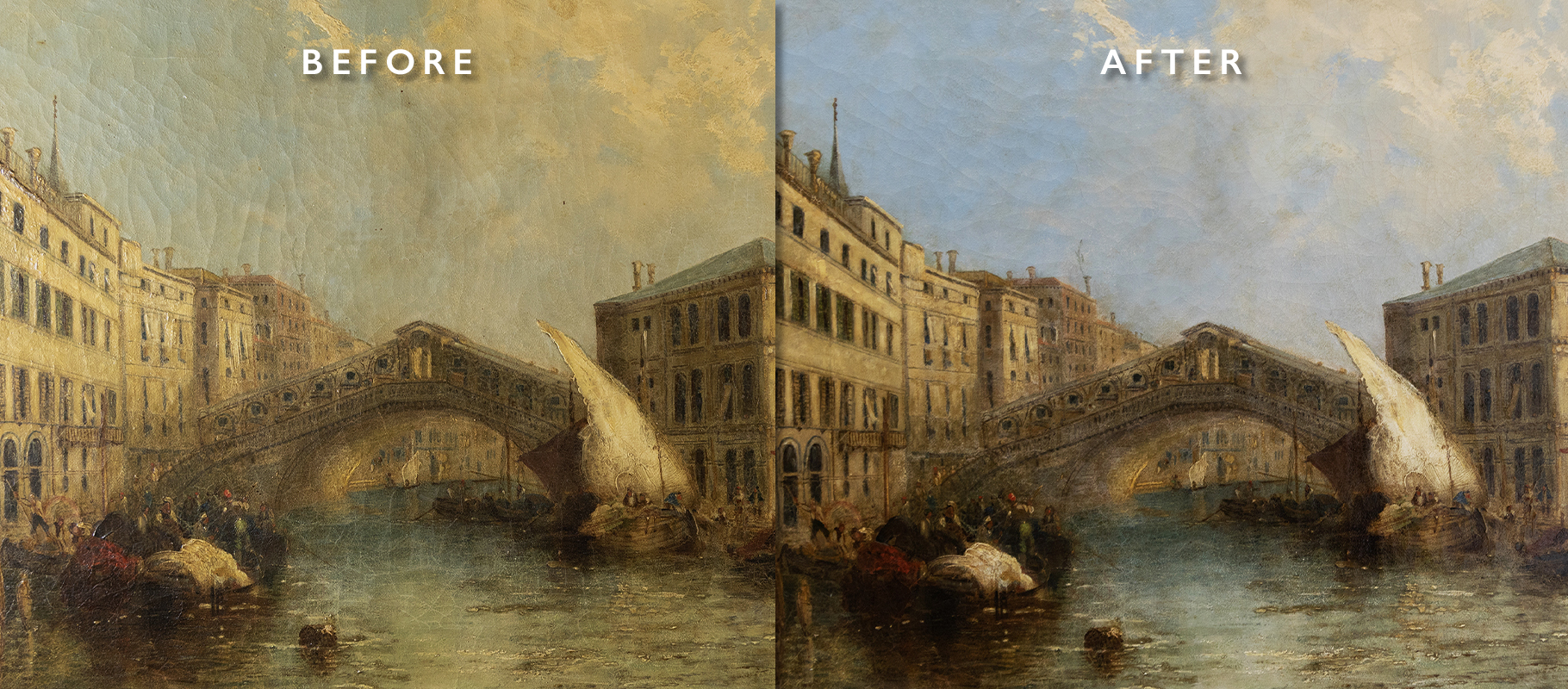 Above: a painting of the Rialto bridge in Venice, before and after restoration by our conservators
Above: a painting of the Rialto bridge in Venice, before and after restoration by our conservators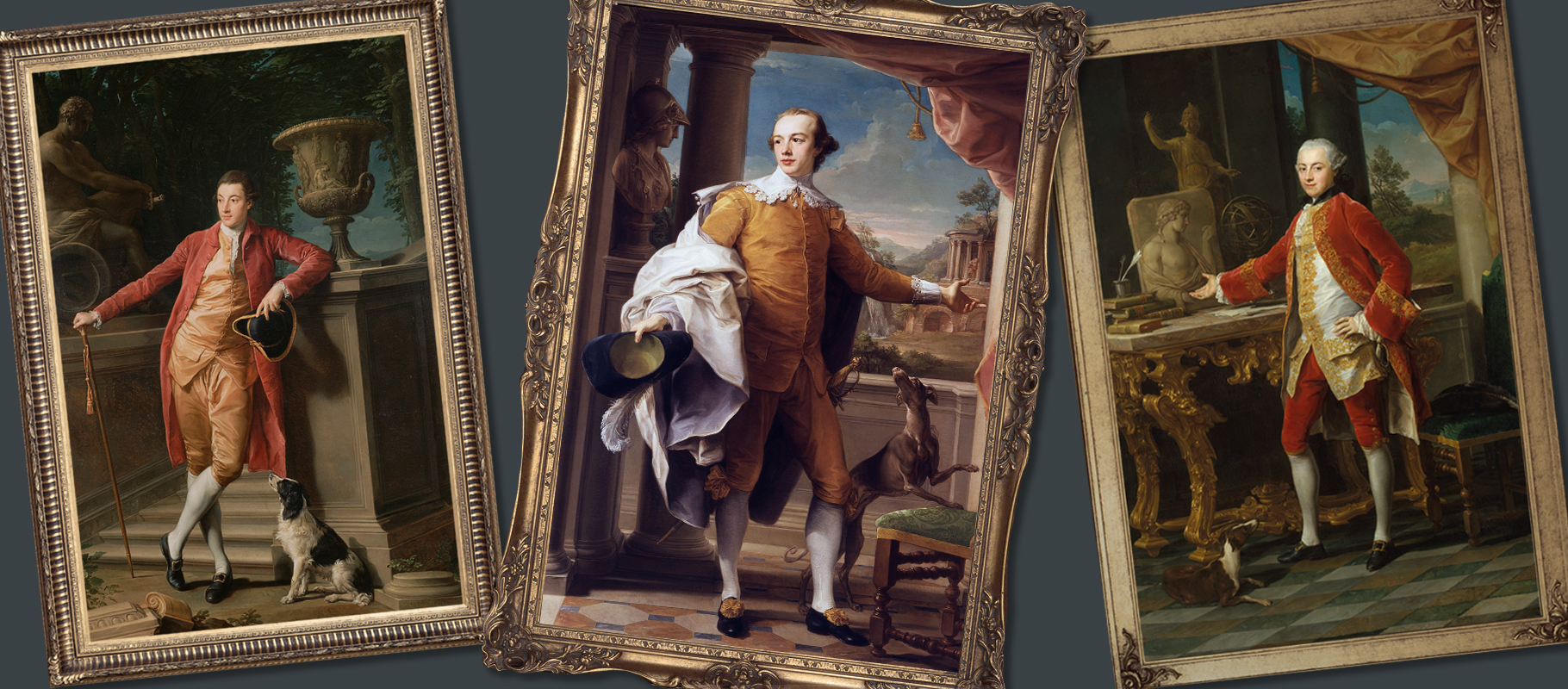 Above: three portraits of grand tourists by Pompeo Batoni, mid 18th century
Above: three portraits of grand tourists by Pompeo Batoni, mid 18th century Above: detail from a group portrait of British gentlemen in Rome by Catharine Read, 1750
Above: detail from a group portrait of British gentlemen in Rome by Catharine Read, 1750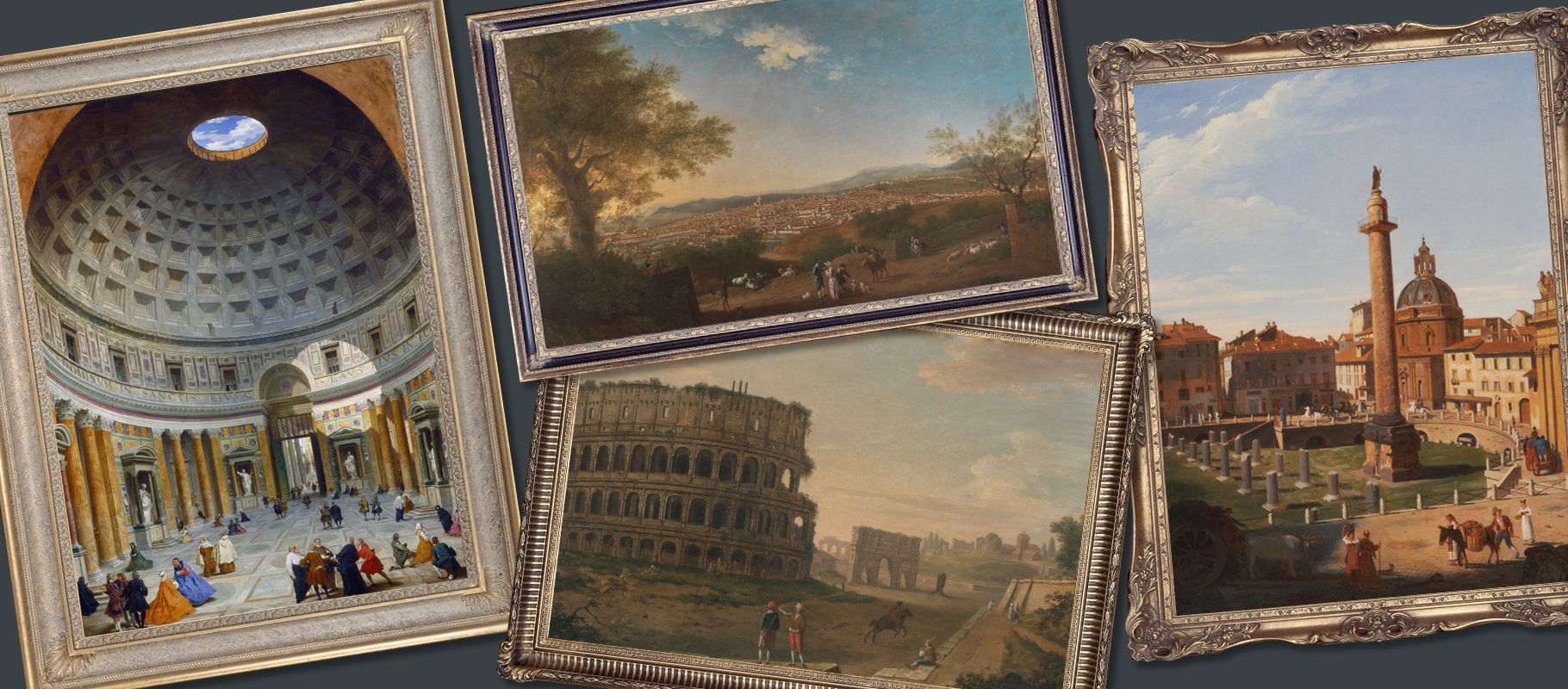 Above: various scenes painted for Grand Tourists including the Pantheon, a view of Florence, the colosseum, and Trajan’s forum
Above: various scenes painted for Grand Tourists including the Pantheon, a view of Florence, the colosseum, and Trajan’s forum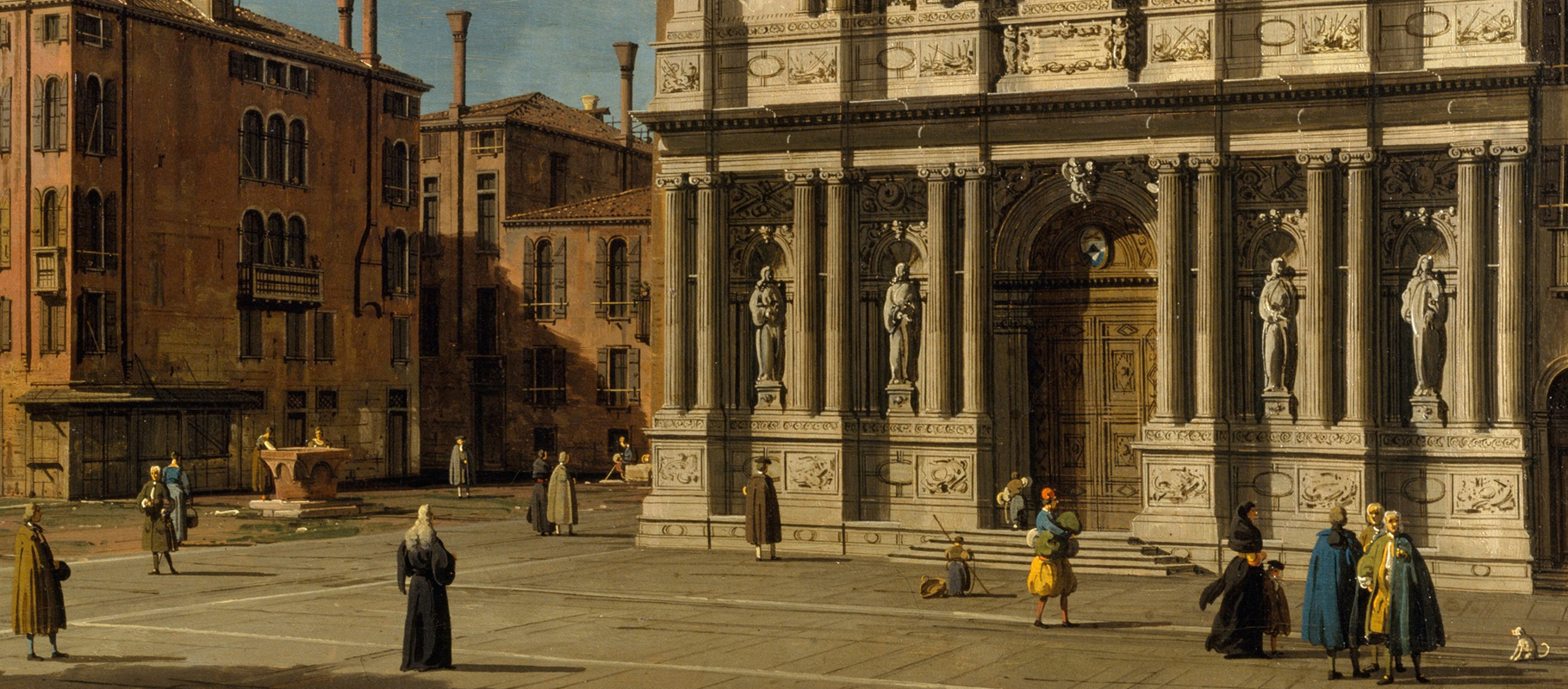 Above: a detail from Campo Santa Maria Zobenigo, Venice by Canaletto, 1730
Above: a detail from Campo Santa Maria Zobenigo, Venice by Canaletto, 1730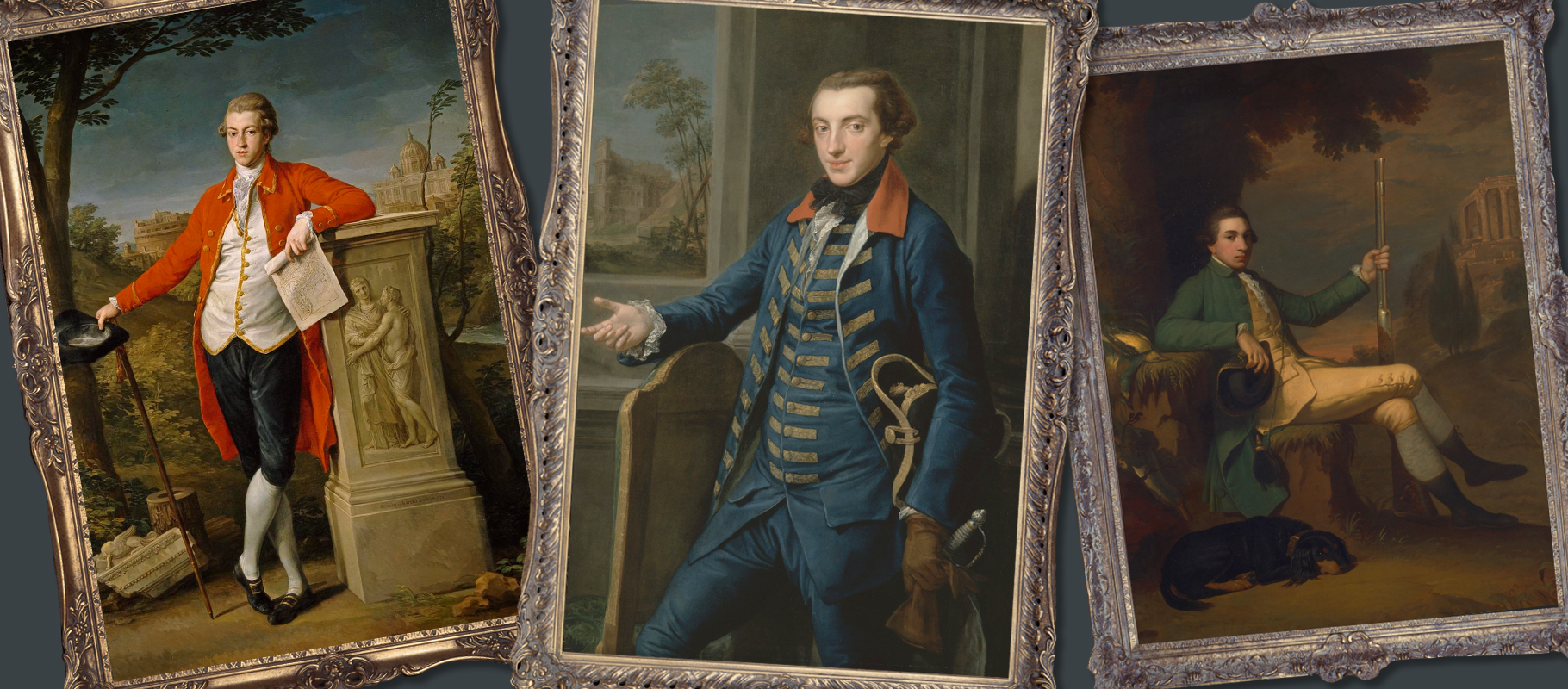 Above: portraits of Grand Tourists by Pompeo Batoni (the portrait on the right has been subsequently attributed to David Allen), all 18th century
Above: portraits of Grand Tourists by Pompeo Batoni (the portrait on the right has been subsequently attributed to David Allen), all 18th century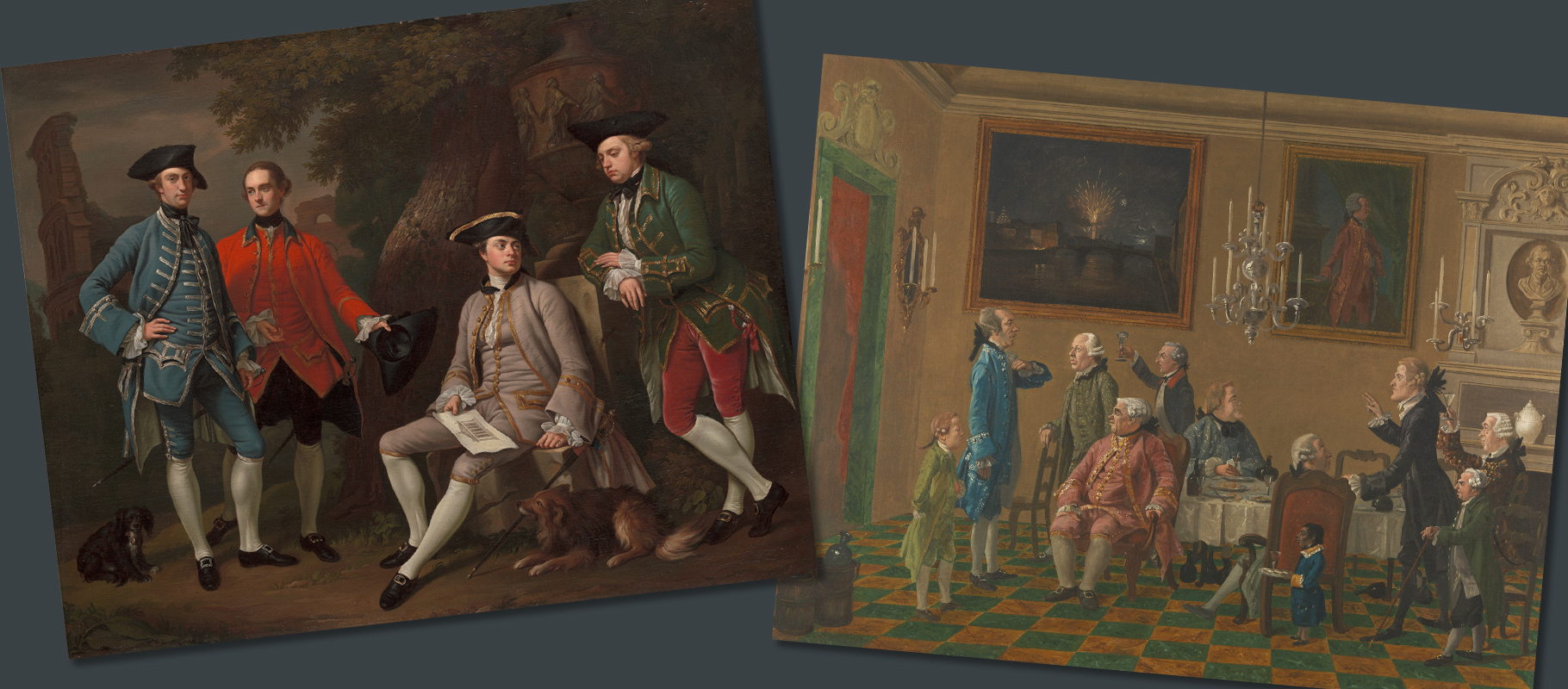 Above: two group portraits of Grand Tourists, the left is a formal portrait by Nathaniel Dance and the right is a caricature scene of Sir Horace Mann’s Home in Florence by Thomas Patch
Above: two group portraits of Grand Tourists, the left is a formal portrait by Nathaniel Dance and the right is a caricature scene of Sir Horace Mann’s Home in Florence by Thomas Patch 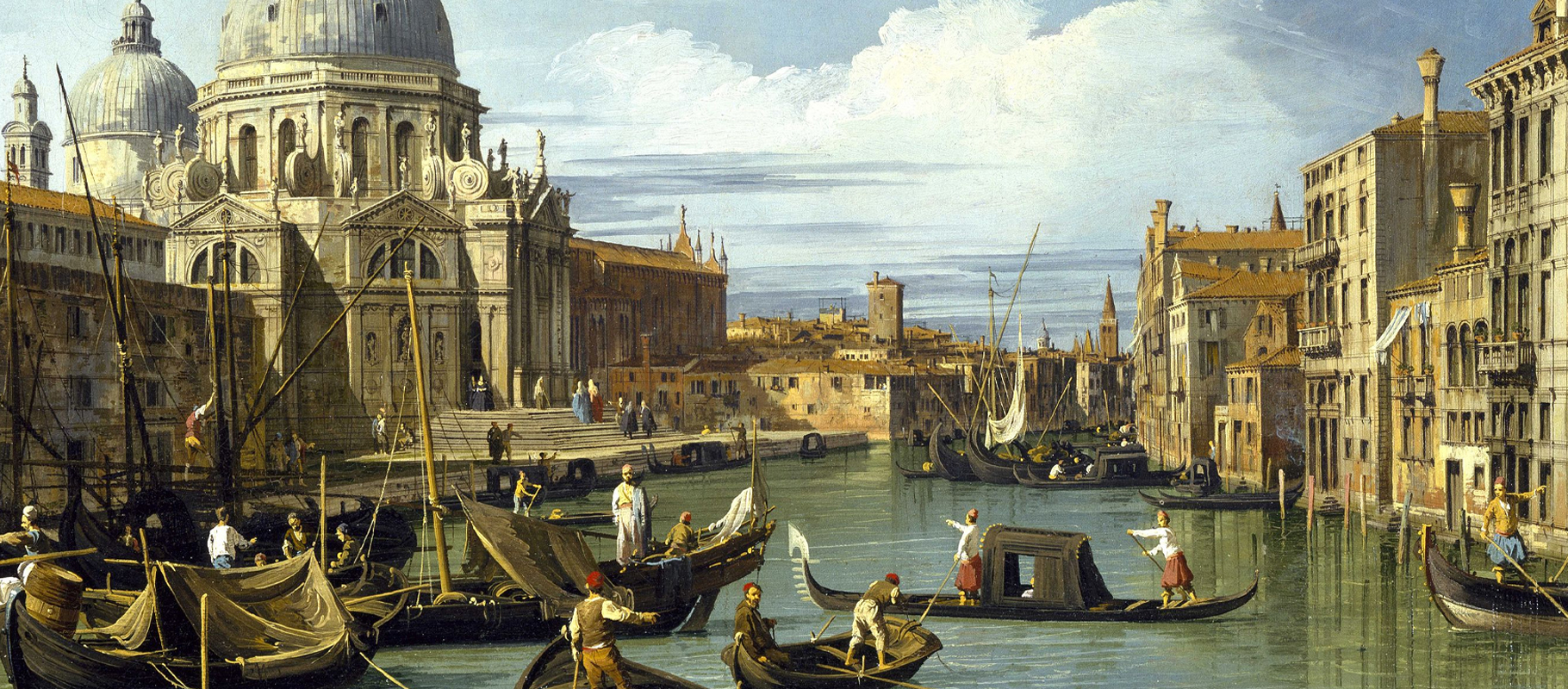 Above: a detail from The Entrance to the Grand Canal by Canaletto, 1730
Above: a detail from The Entrance to the Grand Canal by Canaletto, 1730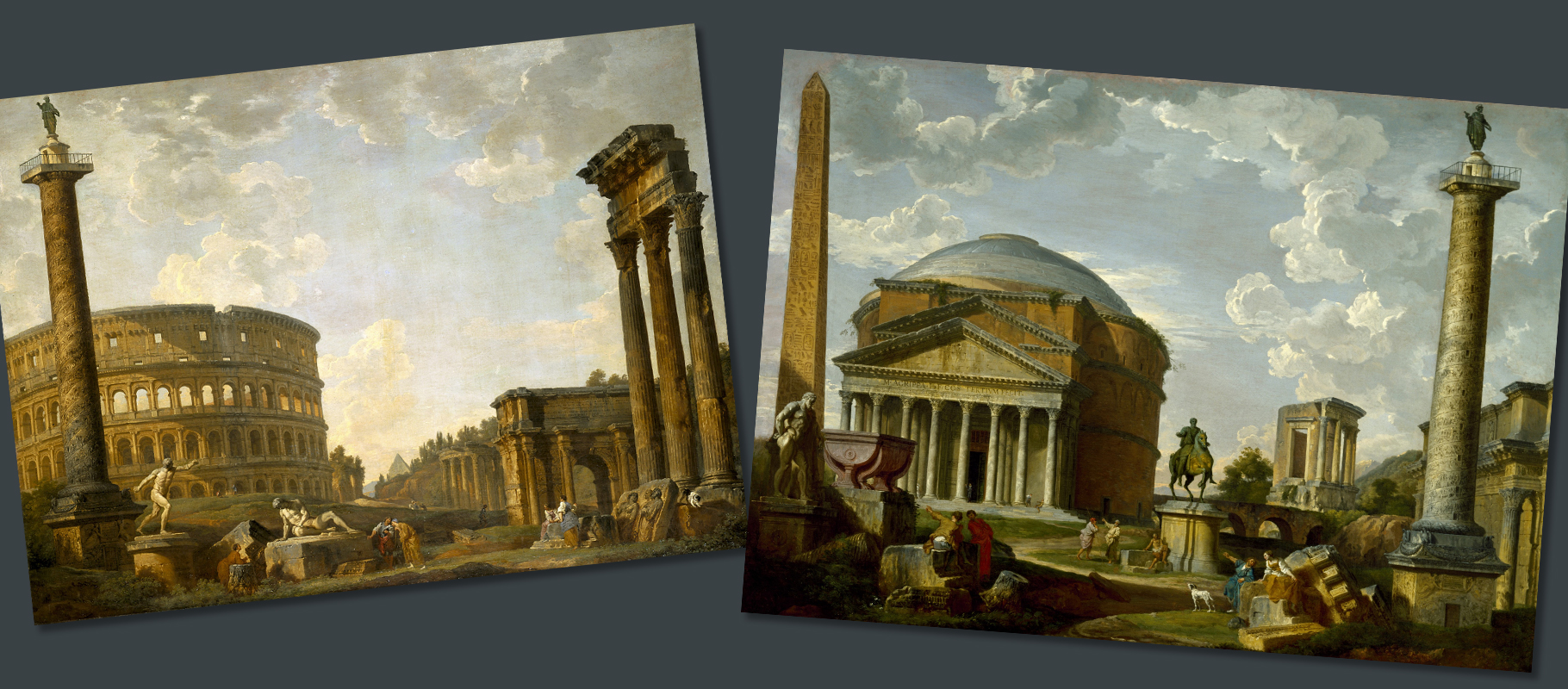 Above: two capriccio scenes by Panini featuring a montage of famous ancient buildings, monuments and sculptures
Above: two capriccio scenes by Panini featuring a montage of famous ancient buildings, monuments and sculptures Above: a detail from a print of the Trevi Fountain by Piranesi, engravings such as these were purchased by tourists with a modest budget
Above: a detail from a print of the Trevi Fountain by Piranesi, engravings such as these were purchased by tourists with a modest budget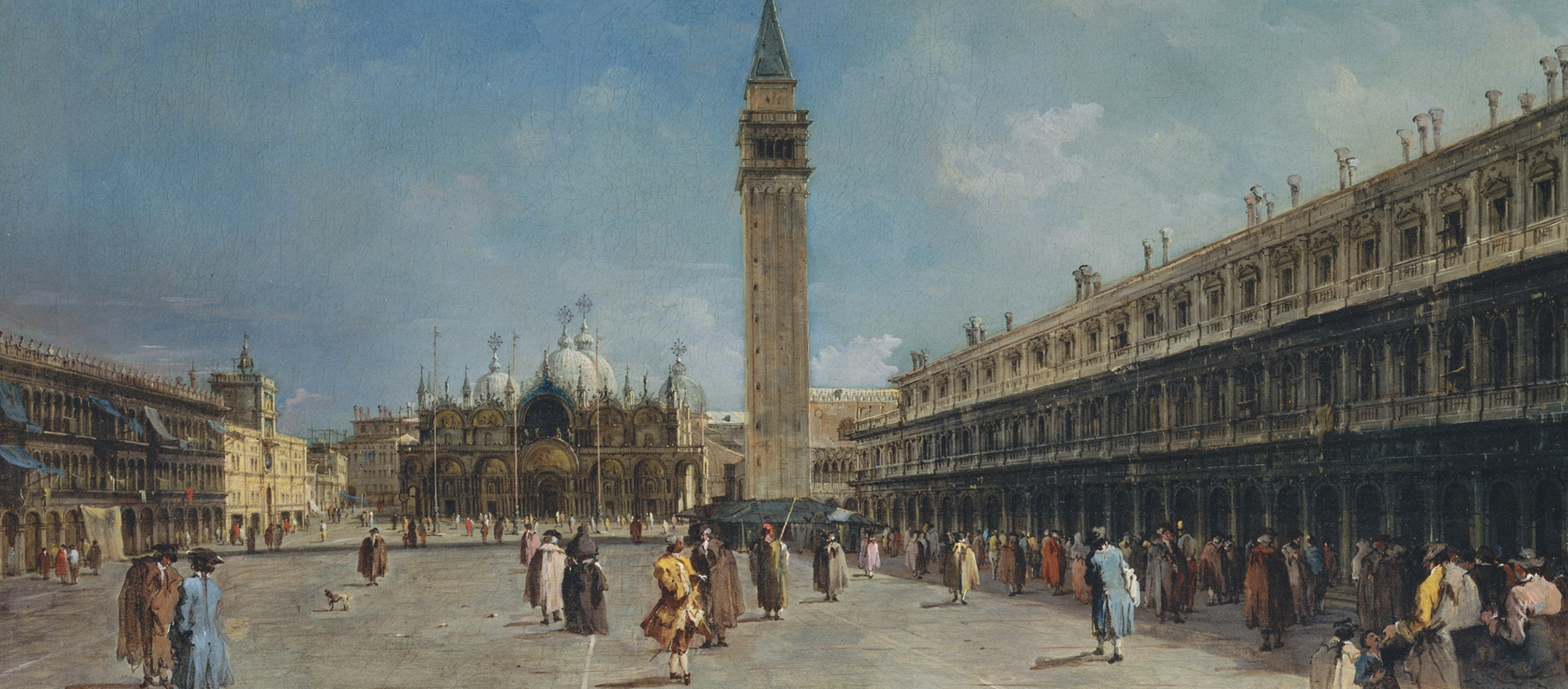 Above: a detail from Piazza San Marco by Francesco Guardi, 1769
Above: a detail from Piazza San Marco by Francesco Guardi, 1769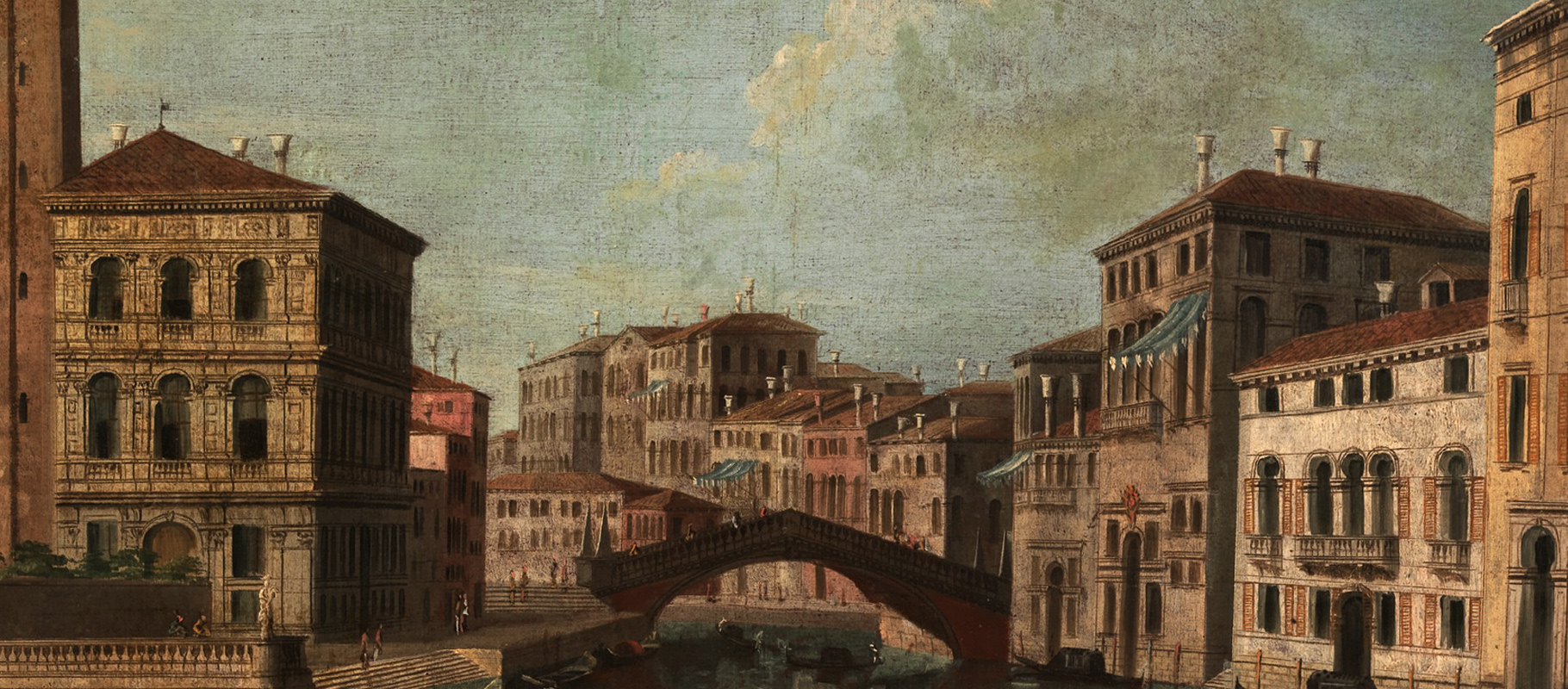 Above: a typical Grand Tour painting with a build-up of historic surface dirt and discoloured varnish
Above: a typical Grand Tour painting with a build-up of historic surface dirt and discoloured varnish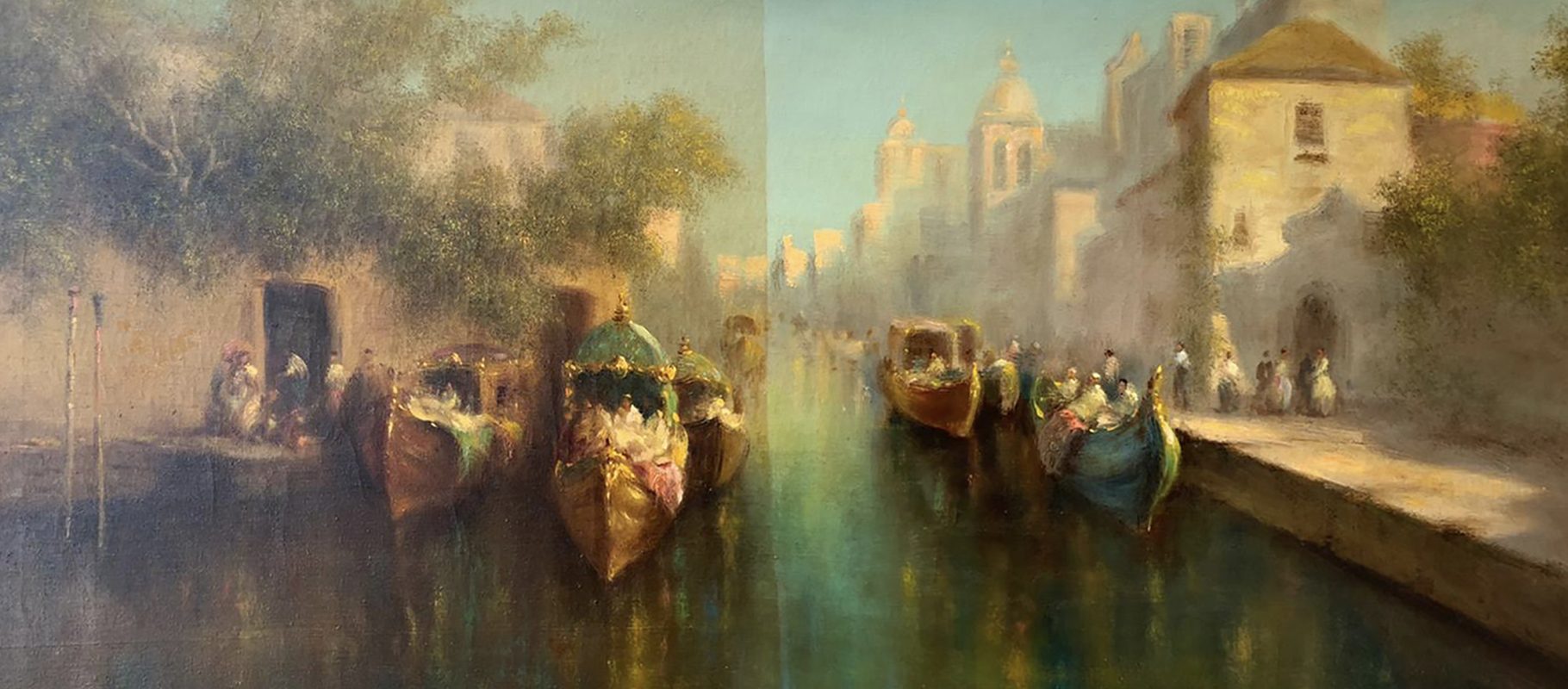 Above: a canal scene halfway through varnish removal
Above: a canal scene halfway through varnish removal
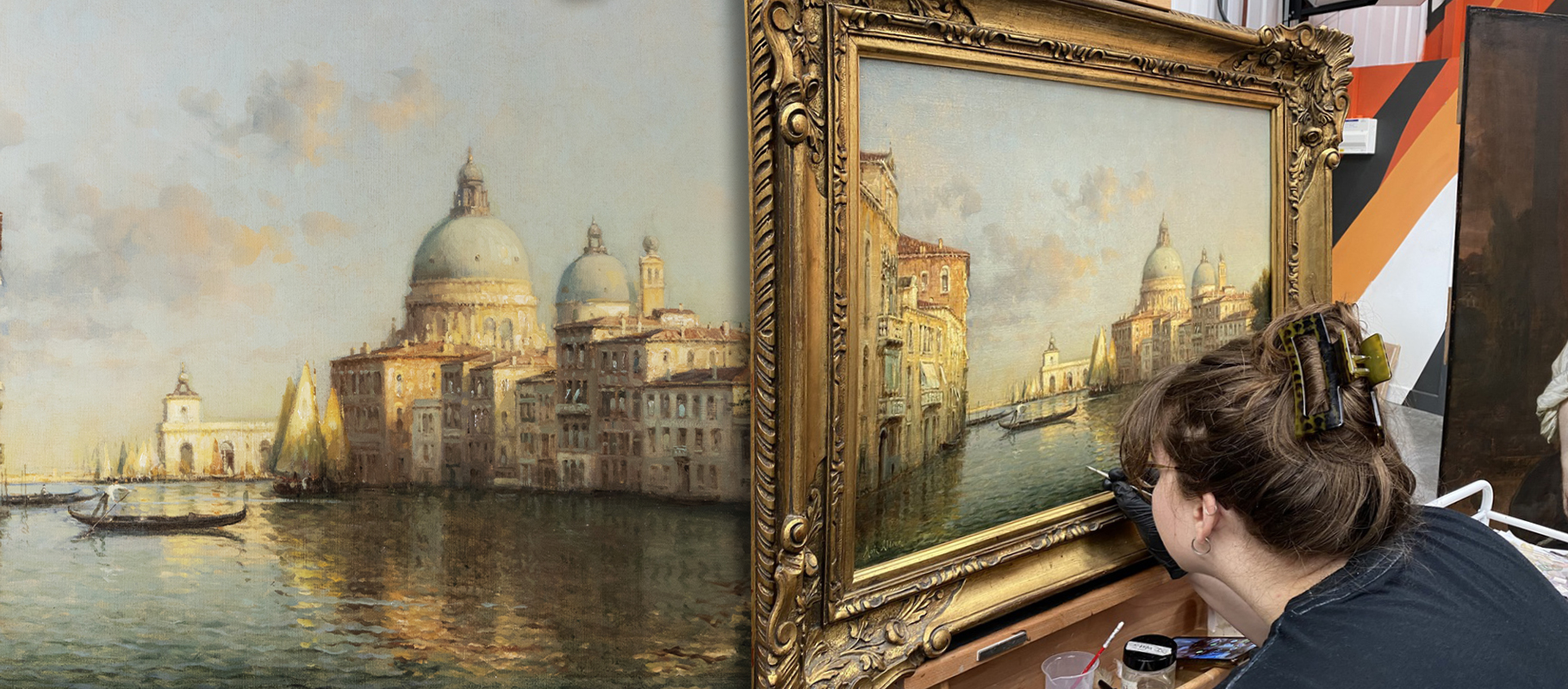 Above: our conservator Sophie retouching a Venetian scene in our studio
Above: our conservator Sophie retouching a Venetian scene in our studio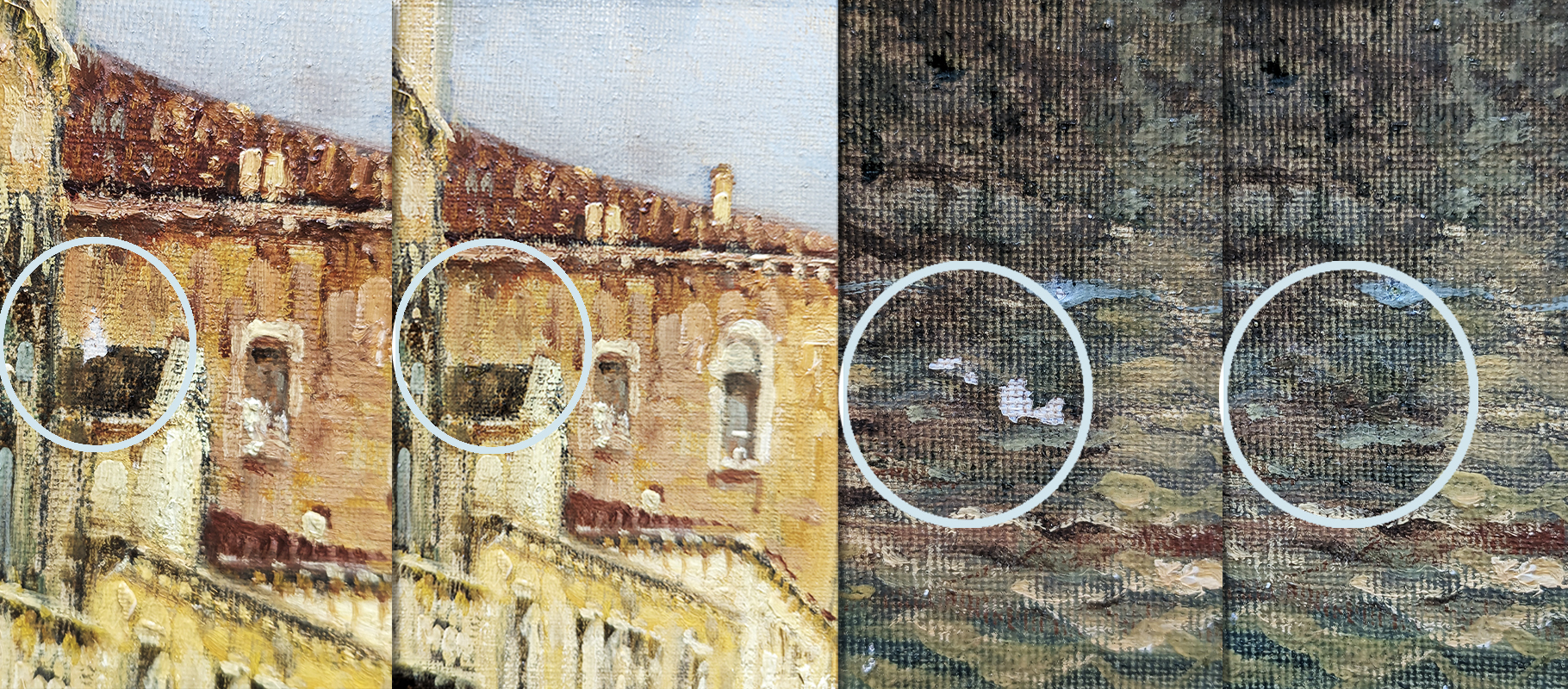 Above: areas of lost paint before and after retouching by our conservator
Above: areas of lost paint before and after retouching by our conservator




